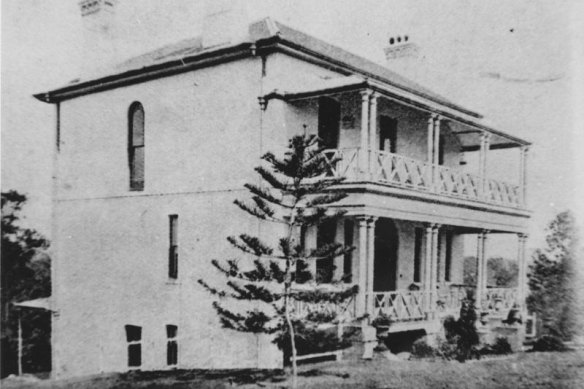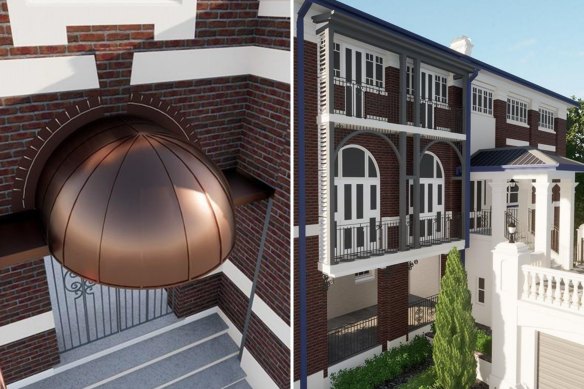Copper topper showstopper? The plan for one of Brisbane’s oldest homes
By Sean Parnell
The owners of one of Brisbane’s oldest homes have asked Brisbane City Council to allow for renovations to update and protect the heritage-listed building.
Toonarbin, on Dornoch Terrace at West End, is believed to have been the work of English designer Benjamin Backhouse and became the home of shipping agent Captain Henry O’Reilly in the 1860s.
After the Catholic Church purchased the house and surrounding land, the architecture firm Hall and Prentice altered and extended the building in the Interwar Free Classical Style in 1927. Under then archbishop James Duhig - known as ‘James the Builder’ for his extensive construction program - the building became the St Francis Convent for the Sisters of Mercy, with a brick front fence bringing the precinct together.

An undated photo of Toonarbin, on Dornoch Terrace in West End.Credit: John Oxley Library, State Library of Queensland
In 2002, when the building was given local heritage status, only two nuns remained at the convent. Five years later, Toonarbin was sold for $4.1 million and became a private residence, with nine bedrooms and three bathrooms.
The new owners have now engaged Mark Williams Architects and a team of builders and engineers to propose modern, and functional, additions to the building.
Documents filed with Brisbane City Council last week reveal the additions are intended to protect the building, which is exposed to the weather. Despite the best efforts of the owners, “the issue persists and poses an ongoing threat to the structural integrity of the building, particularly affecting the timber components in the south-western corner”.

An artist’s impression of the modern facelift proposed for heritage-listed Toonarbin in Brisbane’s West End.
“The new (front) awning is described as a standing seam copper barrel vault with domed edge with metal support framing and an applied copper look finish,” council has been told.
“The new balcony is proposed at the rear of the building and is hidden from street view. Its primary purpose is to provide weather protection to the vulnerable south-western corner of the house. This area has experienced water infiltration issues, particularly during rain events originating from the south-west. Rainwater has been seeping into the brick walls, around the windows on the main and upper levels of the building and through the ceiling. During significant weather events the water flow is substantial, often leading to pooling of up to 30mm in depth.”
The application included a report from a heritage assessor, who acknowledged the changes were partly designed to protect the building from the elements and could be reversed in future. The copper dome would “not be conspicuous, yet will be clearly legible as a later addition,” while the balconies “are light and open and do not obscure that part of the facade”.
The building’s original masonry ‘core’ remains to this day. Under the plans, upper floor windows would be replaced with doors, and the owners have pledged to retain any bricks removed during the renovations for potential future restoration.